Could Nimble be a beginning?
Beauty and the Robot: Disrupting Personal Care
In a world aching for automation to save beauty and grooming time, there are few personal robots answering the call to action. Robots to date have shown themselves pretty lame assisting humans with beauty and personal care needs.
$482 billion global personal care & beauty industry where robots are scarce. In comparison, the global market for industrial robots was $43.8 billion in 2021. Global personal care & beauty is over 10 larger than the market for industrial robots.
Why not?
Why aren’t robots shaving faces, legs and underarms? Or maybe doing facials, plucking eyebrows, filing down rough skin or smoothing SPF 50 over bodies?
In the midst of our great robot revolution, it certainly is a glaring hole in digital disruption. After all, the global beauty and personal care products market size is anticipated to reach $716.6 billion by 2025. That’s not chump change. Still, with all that financial motivation awaiting robots, none have yet made the leap to doing the faces of the rich and famous at Manhattan’s Charivari & Co. In fact, robots are not even close to the aisles of CVS yet.
Then there’s the matter of wasted time. Findings released by a GfK survey from 22 countries “show that women spend an average of almost five hours a week on personal grooming (bathing, shaving, dressing, hair, make-up), while men spend just over three hours.”
Here’s a chart showing the daily time spent on appearance and grooming by gender. Just thirty minutes a day can rack up over 150 hours a year, which is over three weeks of workdays.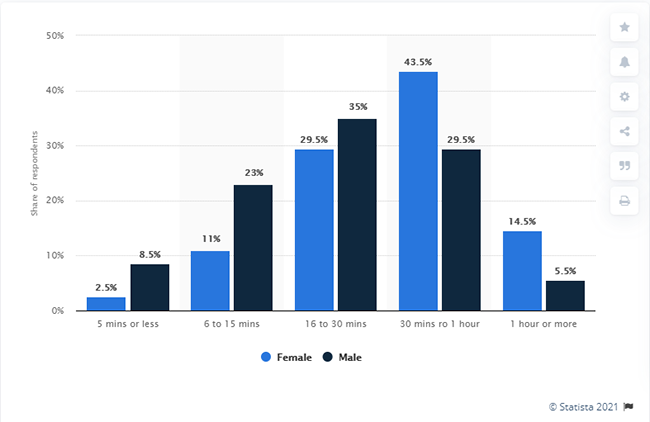 In some small way robots are long past due in presenting to industry and the public a robotic style and beauty ambassador, if not a champion.
In some small way robots are long past due in presenting to industry and the public a robotic style and beauty ambassador, if not a champion.
Contenders and pretenders
A decade ago, Panasonic gave us the robot hair washer, a sort of Edward Scissorhands-type jumble of 16 arms, cables and hoses. It made appearances in Tokyo hair salons and then disappeared.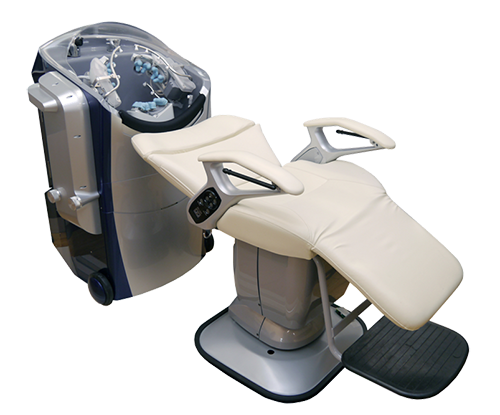
Willo is out with a crescent-shaped robot mouthpiece for brushing teeth.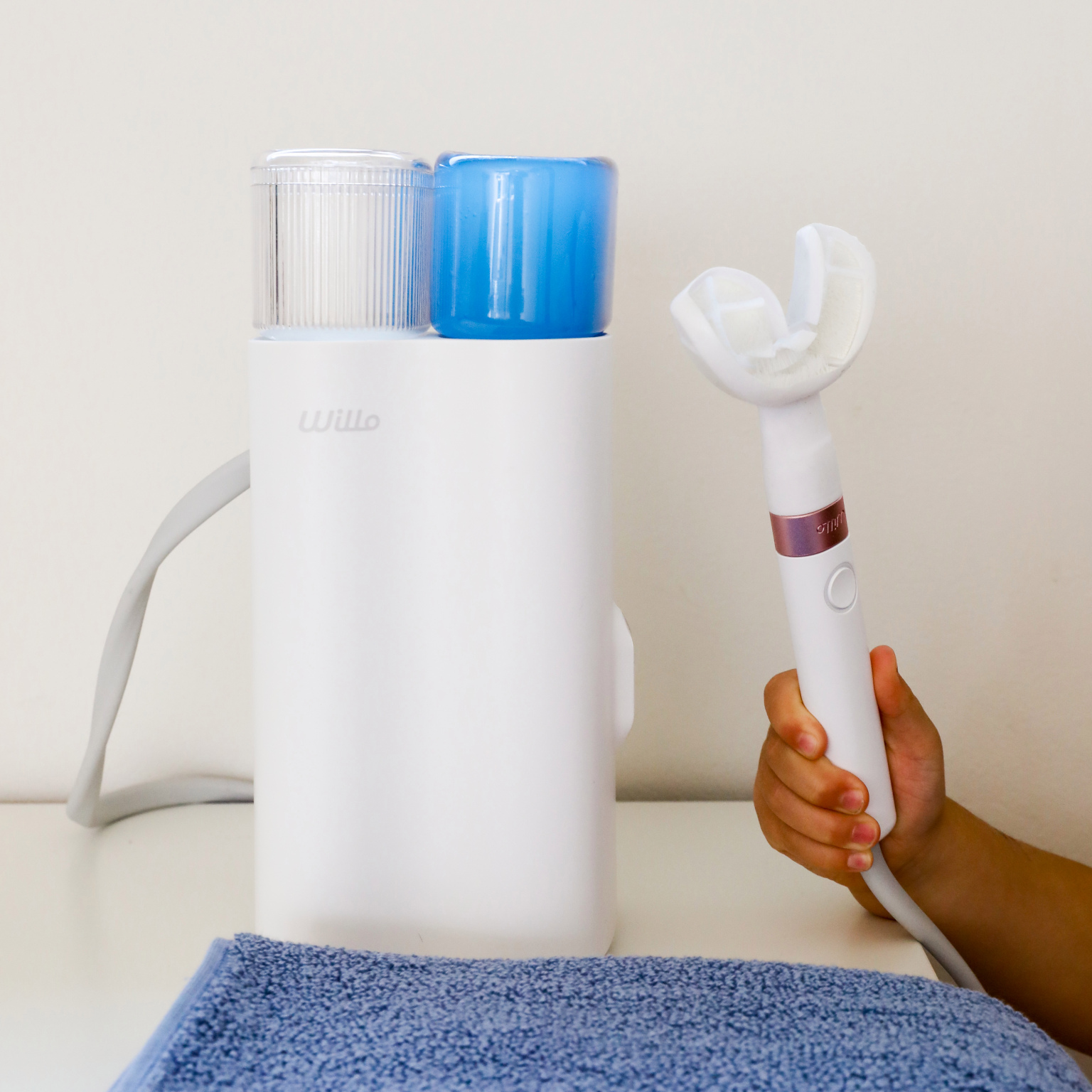
MIT CSAIL has announced their Universal Robot cobot with a hairbrush gripper that brushes out snarly hair.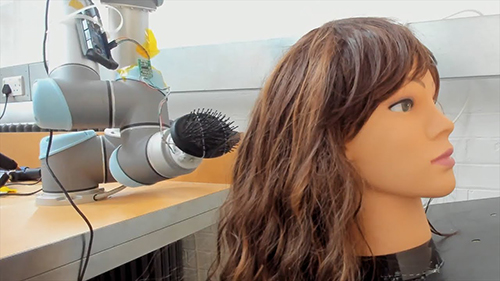
And then there’s Élever, a concept from Seymour Powell that combines 3D-printing, facial recognition technology and AI-powered image analysis, that would 3D print makeup styles directly to a subject’s face.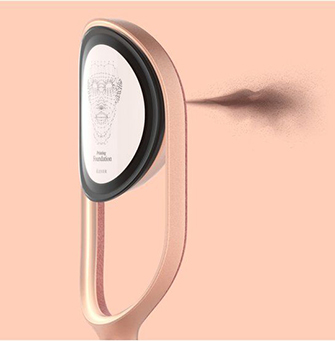
A woman and her face
Three years ago, Ava Welsing-Kitcher, a beauty writer from Stylist, flew to Vienna to have her face made up by a robot; long since defunct and its website vanished.
As Welsing-Litcher remembers it: “There’s a contraption zooming directly towards my eyeball. It’s essentially a tiny robotic arm wielding an eyeshadow brush.
“I watch it like a hawk each time it raises its little limb, trying to calculate exactly where it will land and whether it will render me blind if its intentions go awry. This wasn’t exactly what I’d imagined when I’d agreed to an appointment with the world’s first make-up bot.”
Named, Beautification, the make-up bot was the product of two Austrian design students. “We want users to put themselves in the beauty care of robots, to experience what it feels like to delegate decisions that are usually made by themselves, to machines,” said one of the inventors. “The key theme we wanted to explore was intimacy. We allow technology into a lot of aspects of our daily lives, but when it comes to cosmetics and beauty, we’re scared. We wanted to see how people would react if they allowed robots to do this very personal, daily thing.”
Here’s how Welsing-Litcher looked after her make-up session with beauty-bot. Oh well, back to the drawing board.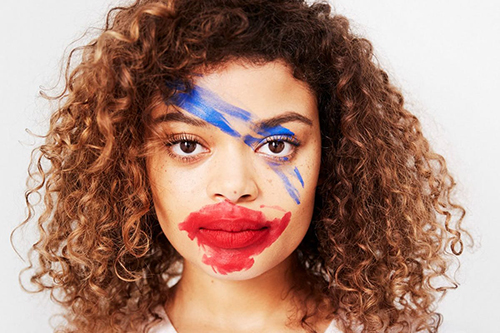
Enter Nimble
Well, what about little robot arms applying nail polish with salon-quality expertise in the comfort of your own home? Impossible? A Brooklyn-based (by way of Israel) startup is offering Nimble, a toaster-size box with very cool product design that “utilizes machine vision, high-resolution micro-cameras, and 3D image processing to scan the size, shape, and curvature of each nail. A tiny robotic arm communicates with complex algorithms to seamlessly paint your nails while a warm airflow system simultaneously dries your nails.”
That’s a lot of gear and capability to pack into a toaster-size box, including a slot for five fingers at a time. The startup has been working for five years on the project, has raised $10 million in financing, and even launched a Kickstarter campaign that netted the company another million dollars.
Nimble is slick and sleek looking, and needs to be to get attention in the glitzy global $14 billion nail care industry. Although it doesn’t shape and trim nails and push cuticles back, nor does put out the fancy nail art that is so in vogue and so lucrative these days, it can lay down four coats of base, color and top coats, for five fingers, and dry them in 10 minutes.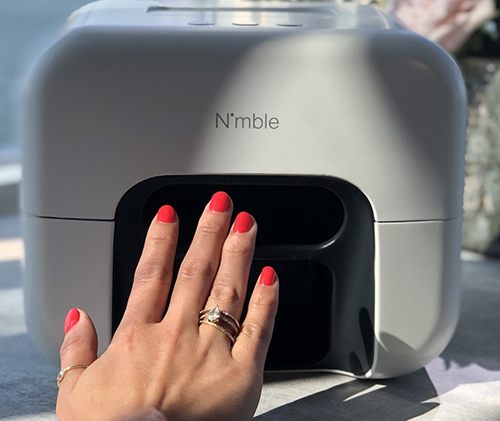
Finally, robotics has a personal care robot it can crow about. It’s a wonderful start after years of robotics ricochets and complete misses.
Of course, the killer app in all of this is the potential of selling gazillions of teeny bottles of nail polish in teeny bottles that only fit Nimble. Now, that’s being nimble!
NOTE: According to Reddit: September 2022 [Nimble] The little nail machine that hasn’t yet – Cancels international orders because ‘Backers outside the US would be waiting a few months longer(?)” despite already being almost a year behind schedule with final product photos still nowhere to be found, and no activity on socials in over a year.

